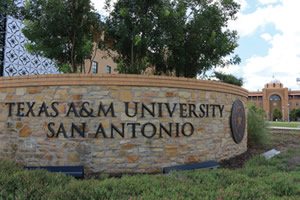SafeZone Indoor Positioning Improves Police Response

Texas A&M University–San Antonio uses indoor positioning solutions by CriticalArc to improve police response with 3D imaging of the campus and enhanced emergency alerts.
“We live in a 3D world, and now this system gives us a 3D view of our campus,” says Roger Stearns, assistant chief of police at Texas A&M University–San Antonio.
He’s talking about CriticalArc’s Safe-Zone indoor positioning solution, which has been deployed on the campus and now provides his officers with an unprecedented three-dimensional view of the multistory buildings under their protection.
It is transforming the way they work. For example, instead of receiving an alert about ‘an incident somewhere in the student union building,’ they get pinpoint specifics, such as ‘incident on the fourth floor, west wing, outside room 410.’
“With SafeZone indoor positioning, we’re able to provide a faster response, whatever the emergency,” Stearns confirms.
Among other capabilities, SafeZone allows users to receive rapid help simply by activating an alert via an app or, in some cases, a wearable duress alarm. As soon as the alert is triggered, the location and details of the user are streamed to the monitoring team, allowing officers to coordinate a smarter, more targeted response. By enabling responders to visualize the precise location of an incident anywhere on campus, SafeZone is much more powerful than traditional fixed panic alarms and blue light telephones, which are more expensive to install and less accurate in operation.
Texas A&M–San Antonio says it will deploy SafeZone to cover any future expansion of the campus. The technology was introduced with no disruption to the campus in a matter of weeks during the summer break. Stearns adds, “The process to get the SafeZone indoor positioning solution deployed is a simple one, as it’s a wireless installation and easy to maintain.”
www.criticalarc.com
This article originally appeared in the College Planning & Management March 2019 issue of Spaces4Learning.